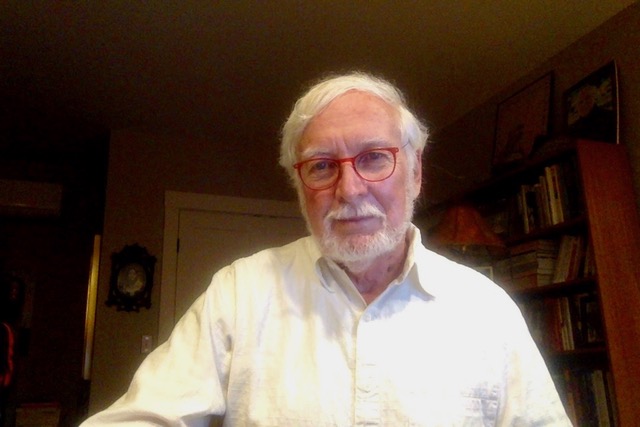The race is on. And we’re all running it.
The real starting gun for New Hampshire was opening up COVID-19 vaccination to the 325,000 citizens over 65 – one in every four Granite Staters. Yes, around 80,000 New Hampshirites have already been vaccinated – health care workers, first responders, residents in long-term care facilities. But that was just the warm-up.
The finish line is herd immunity.
That’s a high hill to climb, but climb it we must if the nation – and really, the whole world – are to get beyond this ruinous pandemic by late 2021.
Until recently, conventional wisdom held that herd immunity against COVID-19 would occur when 60 percent or so of us became immune, either from surviving infection or through vaccination. No longer. Now the best estimate is 80 to 85 percent, according to Dr. Anthony Fauci, who understands pandemic dynamics better than anyone.
Eighty-five percent is a very tall order. Dr. Fauci, who’s President Biden’s chief medical adviser on the pandemic, hopes we can get there by late summer or early fall. But as in any race, that’s no foregone conclusion. There will be stumbles. The virus will surely spring nasty surprises that could set us back. Pandemic fatigue and Americans’ resistance to limits on their liberty will hold us back. We won’t collectively cross the finish line unless and until governments, health systems and individuals understand what we’re up against and do what we need to do.
For starters, understand this: We aren’t so much racing the clock as we’re racing the virus. As long as our fellow humans continue to get infected at current rates, time and biology are on the virus’s side.
Let me explain. You’ve probably heard this from other sources, but it definitely bears repeating because (1) it’s a little complicated and (2) it’s the essence of the virus’s advantage.
The more COVID-19 replicates itself – by infecting susceptible humans — the more it will mutate. Among these billions of mutants, a few will get a leg up. In their drive to survive, COVID-19 viruses that carry advantageous mutations will out-compete others.
This dynamic is inexorable. Quenching it requires sharply limiting the number of unvaccinated humans. The sooner that happens, the faster we collectively will outrun the virus and its mutated progeny. So when more highly transmissible mutants emerge, they will encounter fewer susceptible humans to infect. The race will be won when we close off the virus’s opportunity to mutate at great rates.
We humans begin 2021 with one incredibly lucky advantage that — potentially — can prevail against the virus’s mutational arsenal. Thanks to scientific discoveries stretching over decades, the time was ripe to devise amazingly effective vaccines in record-smashing time. The invention of effective vaccines and the rapid scale-up of their production is our beacon of hope.
We mustn’t squander that advantage. COVID-19 could eliminate it if we fail to get the vaccines into enough arms, much faster than has ever been achieved.
There are alarming signs that COVID-19 is pulling ahead. A variant now spreading throughout Europe has tripled daily death rates in Britain – not because it’s more lethal (this is not yet clear) but because it’s 70 percent more transmissable, so it’s infecting a higher proportion of the non-immune.
A virus this contagious spreads insidiously. For awhile things don’t look so bad; then suddenly they can get beyond control. Consider an analogy Denmark’s prime minister recently used to explain why continued lockdown is necessary there. She asked Danes to picture a leaky pipe in Copenhagen’s 38,000-seat soccer stadium. At first the leak is only one drop per minute. Soon it doubles to 2 drops a minute, 4 drops, 8 drops and so on. (This is analogous to a viral mutant that jumps to two people for every one it infects.) For the first 42 minutes the stadium would seem almost dry. By the 44th minute, it would be overflowing.
The two initial vaccines seem to suppress the British variant pretty well. A different mutant in South Africa appears more resistant – to the extent that one manufacturer, Moderna, is modifying its vaccine so it can be used as a third-shot booster when the South African virus takes off. Another mutant in Brazil is causing similar concern.
Meanwhile, a new California variant is spreading rapidly there and has popped up in 11 other states (but not yet in New Hampshire). It will be hard to know how fast this and other mutants are spreading because the US ranks 43rd worldwide in its rate of genomic testing of COVID-19 samples.
This is the 30,000-foot view. Meanwhile, the New Hampshire picture is no cause for complacency. At current rates it will take several months to vaccinate the state’s over-65 population, even with the 16 percent increase in doses promised last week [1/27/21] by the Biden Administration. And that’s not allowing for any of the second shots required to achieve maximum immunity. As the experience so far has shown, delivering vaccine into people’s arms is still fraught with logistical challenges and confusing signals. Public messaging badly needs improving so people understand what to do, why, and what to expect. Even more difficult, everybody will need to practice COVID precautions until we reach that 85 percent goal. That might not be until next fall, or even later.
Like it or not, this is the race we’re running. It’s no time to flag.
Richard Knox is a journalist who has reported on medicine and public health for NPR and The Boston Globe. He lives in Sandwich.





